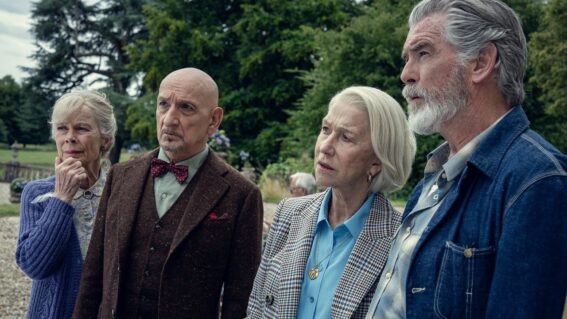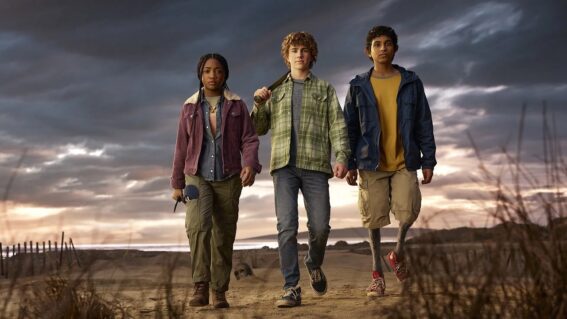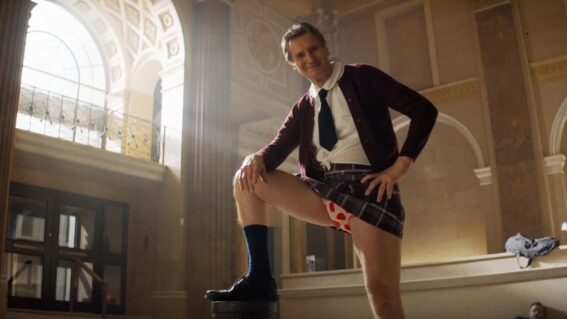How to Make Scary Movies Scary
The scariness of a horror film is a very subjective affair, much like the hilarity of a comedy or the attractiveness of Daniel Craig’s face. However, the genre has seen an overall decline in quality over the years, preferring to opt out of genuine freakiness in favour of shallow torture-porn. Hardcore horror junkies now turn […]
The scariness of a horror film is a very subjective affair, much like the hilarity of a comedy or the attractiveness of Daniel Craig’s face. However, the genre has seen an overall decline in quality over the years, preferring to opt out of genuine freakiness in favour of shallow torture-porn.
Hardcore horror junkies now turn to foreign exports for their nerve-wrecking fix. America is fully aware of this trend too, churning out remake after remake after remake. Only recently has there been a push to bring genuine mind-infecting paranoia-inducing horror back into mainstream cinemas (Paranormal Activity, Insidious, The Woman in Black).
So how can a horror flick ascend from being a dull, predictable gore-fest to being a mind-altering nightmare inducer that could puncture a hole through a dream-catcher? We can think of five ways…
1. Be Patient
This might sound like crazy talk, but we don’t need to see someone get impaled or de-limbed in the first half hour. That time should be spent getting to know the protagonists. Doing so allows us to sympathise with their horrific situation, which they’ll be exposed to LATER. If we can relate to them, we’re put into their shoes. Their fear becomes our own.
That’s a huge factor that helped make Psycho so horrific. We spent the first half hour of the film with our protagonist Lila. After checking into the Bates motel, she took shower which, quickly turned into a blood bath (literally). Several terrifying stab wounds later, she was dead. It was a massive shock, with the camera making damn sure you knew her body was lifeless, lingering around her motionless cadaver in a masterfully eerie fashion.
Creating one of the biggest frights in cinematic history took time. The build-up was essential, for it took the long, conventional route of standard character development before taking a hard left, catching the audience completely off guard.
2. Use Music Discretely
Music acts as a guide to how we should feel. A fast-paced, moody score can put us on edge while a rousing orchestra can round up a collective feeling of triumph. We’re sensitised to letting the film’s music hold our hand and walk us to the right emotional cue.
Now imagine a score that takes you through a bleak, murky, secluded world. It then pushes you right in the centre and runs off. Distorted, lost and isolated, there’s no telling where to go or what’s going to happen. That fear of the unknown plays to every human being, one that can be expertly manipulated not just by a freaky musical track, but by a reduced and refined use of it.
Perhaps this is no more evident than with the amazingly spooky Tubular Bells. Its melody brings you into an odd sense of ease while its simplicity helps free your imagination for other things, like backwards crabwalks and projectile vomiting. Uncomplicated, discrete and effective.
3. Show Little, Explain Little
Illustrate only a vague idea of what the threat is.
Allow your audience to fill in the blanks.
Sometimes, less is more.
4. Vulnerability
http://youtu.be/2TVooUHN7j4
Weakness diminishes your chance of survival. It’s a simple fact, one we’re all pretty aware of. That weakness can come in many forms however: physicality, mentality, agoraphobic surroundings. Effective horrors usually take advantage of all forms of vulnerabilities.
A gaunt wife trying to defend herself against her psychopathic axe-wielding husband is far more terrifying to witness than Arnold Schwarzenegger going mano a mano with a Predator. For one, the circumference of Arnie’s bicep is greater than that of Shelley Duvall’s waist. For two, Jack Nicholson is a little scarier than the Predator. Just a little.
Full realisation of Wendy’s vulnerability (her skinny figure, her lack of composure, her being stuck in a bathroom) plays in superbly to how frightened we are when dull-boy Jack tries to burst through the door.
5. Originality
By now, you’ve probably picked up a common theme: fears of the unknown. While originality isn’t exactly the most original suggestion, it’s the most relevant to making a horror horrifying.
A twisted vision comes from a twisted mind, with ‘twisted’ being just another synonym for ‘creative’. So, what’s the most effective way of scaring an audience? Give them something frightening that they haven’t seen, something they have trouble even comprehending.
This leads us nicely to H. R. Giger, the visionary behind the xenomorph designs in the Alien franchise. When the first was released, the trailer gave no indication to what the creature looked like. With no internet memes to spoil the surprise back then, you had to sit in a dark theatre in order to catch a glimpse of it yourself. You were unprepared. So the moment that poor dude’s chest burst open, you better believe the audience experienced a “What the frick!?” freak-out.
And since we’re talking about chestbursters…
















